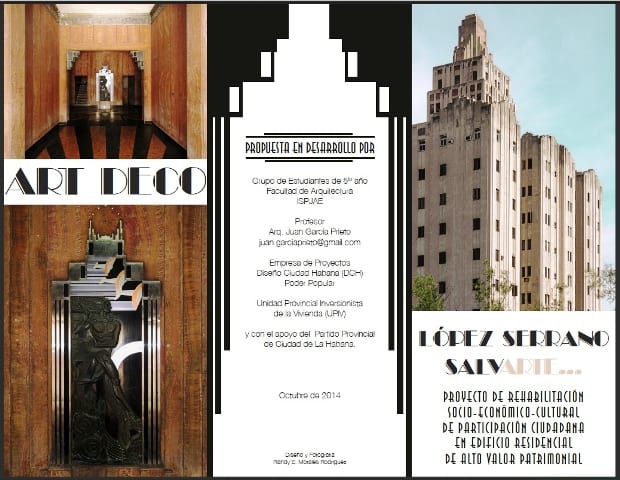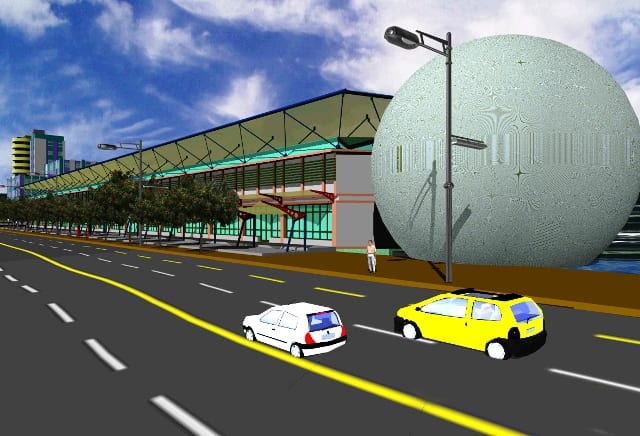Cuban Architecture and Heritage in the Eyes of Foreign Experts
By Maya Quiroga

HAVANA TIMES — Havana’s architectural heritage grabs hold of one, captures one, draws one’s attention. Currently, 165 US architects and experts in the field of preserving and restoring historical architecture are on the island, to take part in the Design Committee Conference of the American Architects Institute.
Until April 23, experts from the National Cultural Heritage Council, the Copperbridge Foundation and the American Architects Institute will meet in Havana to follow the work being carried out by the young through the Office of the City Historian, the Higher Institute for the Arts, the Higher Design Institute and the Faculty of Architecture of the Jose Antonio Echevarria University (CUJAE).
To obtain additional details about the gathering, to include lectures and guided tours through heritage sites in Havana and Matanzas, we converse with Geo Darder, chairman of the Copperbridge Foundation.
HT: When were relations between the National Cultural Heritage Council and the American Architects Institute established?
Geo Darder: Relations between the National Cultural Heritage Council and the American Architects Institute date back to 1998, when we held the first gathering on Art Deco architecture, which saw the participation of the Association of Cuban Writers and Artists. Marta Arjona was one of the main promoters of these kinds of gatherings. The heritage team currently chaired by Gladys Collazo has supported these types of cultural exchanges much. We are the bridge between the two institutions.

Why did you decide to hold the 47th Design Committee Conference of the American Architects Institute here in Cuba?
GD: The conference has been held around the world. We were going to organize it in Brazil in 2016. In 2013, the organizing committee in Brazil found out about the Art Deco Congress held in Havana. That is why they decided to hold the conference in Cuba this year.
What are the aims of this committee?
GD: The Design Committee of the American Architects Institute aims to explore and study the architectural heritage of the host county. Havana is an example of architectural history that has been preserved, something you don’t see many places around the world, where entire cities and neighborhoods have been torn down for new buildings to be built.
Cuban architecture is of great value because it is original. In many cases, it is in poor condition, but, under new regulations, many buildings on the island are being restored and refurbished for the building of restaurants and even private residences. Some of this work is done very well and some very poorly, but, generally speaking, I think these efforts are very important for Cuba’s future.
I believe that here, as in most parts of the world, you’ll have business, youth and restaurant districts. For instance, Havana’s Chinatown can be restored so it will be what it was before and in order to bolster the economy.

What is the Copperbridge Foundation?
GD: It is an institution established six years ago in the United States to encourage exchanges between countries and to support art and design initiatives, in all their forms. We have our offices in Miami. We’ve taken Cuban artists to the United States through art residencies we have designed for them.
We have also supported trips by dance companies that stage performances in New York, Los Angeles and Chicago, to promote Cuban art and culture. We worked in the Detral del muro (“Behind the Wall”) project, headed by curator Juan Delgado, during the Havana Biennale.
Now that the island is opening up to the world, my dream is to have more conventions, not only to rescue buildings in Havana such as the Lopez Serrano, but also so that young architects will be able to take part in cultural exchanges in the United States and return to the island with the knowledge they’ve acquired. For Cubans, it is really important to be able to travel, to get to know other cultures and incorporate this into theirs.
The Foundation wants to know what young people are doing in Cuba today, what opportunities are open to them, what they need for their work, and this can result in future exchanges. That is why we go to see the different projects being carried out by the young. We’ve gone to the Fabrica de Arte, a great example of what can be done with an industrial structure and how to put it at the service of culture.
Architects have no creative limits and, if restaurants and cultural centers continue to be built, regulations to control the use of urban space will have to be developed. The young will have to study what materials to use, what structural design to follow and they will require the help of architects from around the world.
HT: Perhaps architects could be provided with financing to publish a Cuban architecture magazine.
GD: That’s a project we could support, of course, but they have to present it formally. We could also establish some form of cooperative link with a US magazine.
Click on the thumbnails below to view all the photos in this gallery. On your PC or laptop, you can use the directional arrows on the keyboard to move within the gallery. On cell phones use the keys on the screen.









